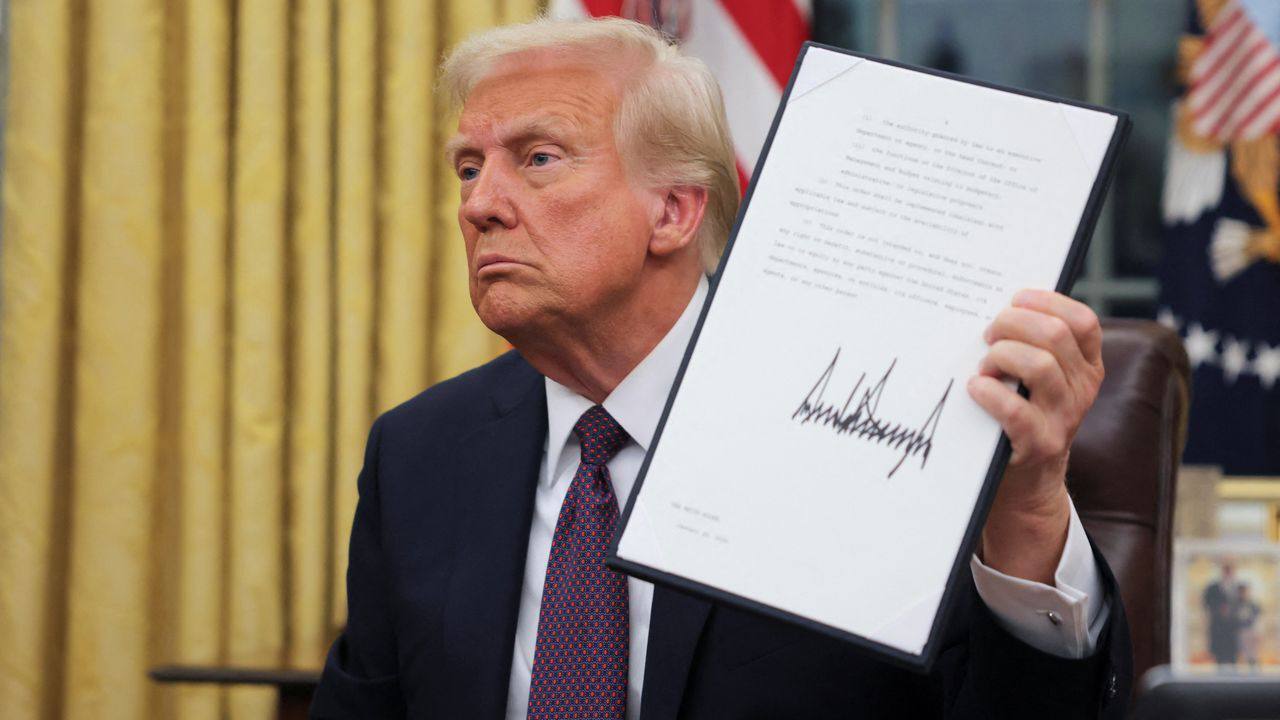What Do Trump’s First Day Executive Orders Say About His Presidency?
Published on January 22, 2024

Monday 20th of January officially marked the return of Donald Trump as the President of the U.S. Wasting no time, he marked the beginning of his term by signing an avalanche of executive orders (EOs) across nearly every policy area imaginable. The focus of these EOs and their extensive use by Trump led to widespread discussions about the balance of power within the American political system.
In his inaugural speech, Trump labelled his tenure as the start of the ‘Golden Age of America’. Let us begin by walking through the main policy areas that make up this vision of the U.S. by the new President.
Unsurprisingly, migration was one of the key focuses of Trump’s Day 1 EOs. As such, he declared a state of national emergency on the U.S.’s Southern border with Mexico and ordered an increase in the number of troops present in the area. Additionally, the President designated Mexican drug cartels as ‘terrorist organisations’. The birthright citizenship was also scrapped, though this action is expected to face significant judicial challenges.
Through his EOs Trump also shifted the direction of U.S. policy away from the international goals of limiting the impact of climate change, reversing much of the progress made during Joe Biden’s presidency. For instance, Trump reiterated his withdrawal from the Paris agreement, a document which drives cooperation around limiting the impact of climate change, a move he made during his first term (only for Joe Biden to later rejoin the agreement). The new President also pledged to fulfill his campaign slogan of ‘Drill, baby, drill!’ and repealed Biden’s memo prohibiting drilling in the Arctic.
In foreign affairs, perhaps the most significant EO Trump signed on his first day was a temporary suspension of the U.S. foreign assistance programs for 90 days. It is yet unclear in what exact ways the aid will be affected, however, this action highlights the new administration’s desire to pursue a more isolationist approach in foreign policy.
Several EOs addressed social issues. Among them, Donald Trump signed an order to end the government DEI (Diversity, Equity, and Inclusion) programs and mandated that the federal government officially recognise only two genders: male and female.
This is, by no means, the full list of the EOs that have been yet signed by the new American president. However, even the actions singled out here are worth reflecting upon.
The approach taken by Trump here exemplifies his hallmark ‘America first’ approach and his ideological isolationism. None of these EOs are focused on prioritising international cooperation; indeed, the opposite is true. For better or for worse, Trump at all times opts for strengthening America’s domestic position, even at times at the expense of global stability.
It is difficult not to be concerned about the state of international affairs during Trump's second term, given that the U.S. still plays a major role in the international arena. A fully isolationist approach in America could destabilise the framework of international bodies, potentially completely removing the incentive for cooperation.
Lastly, it is also worth noting the peculiarity of the nature of the EOs as a tool. While they are intended to be used as one of the few tools of unilateral action by the President, the lack of opposition to Trump in Congress may create a very dangerous possibility that the checks on his power remain absent.